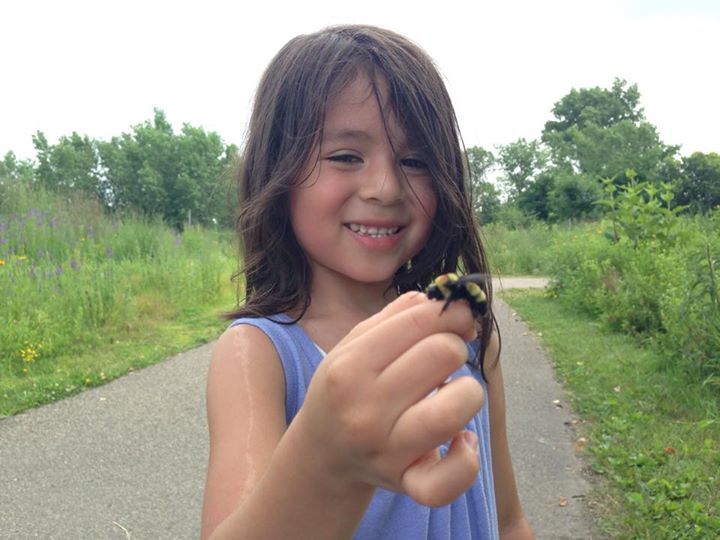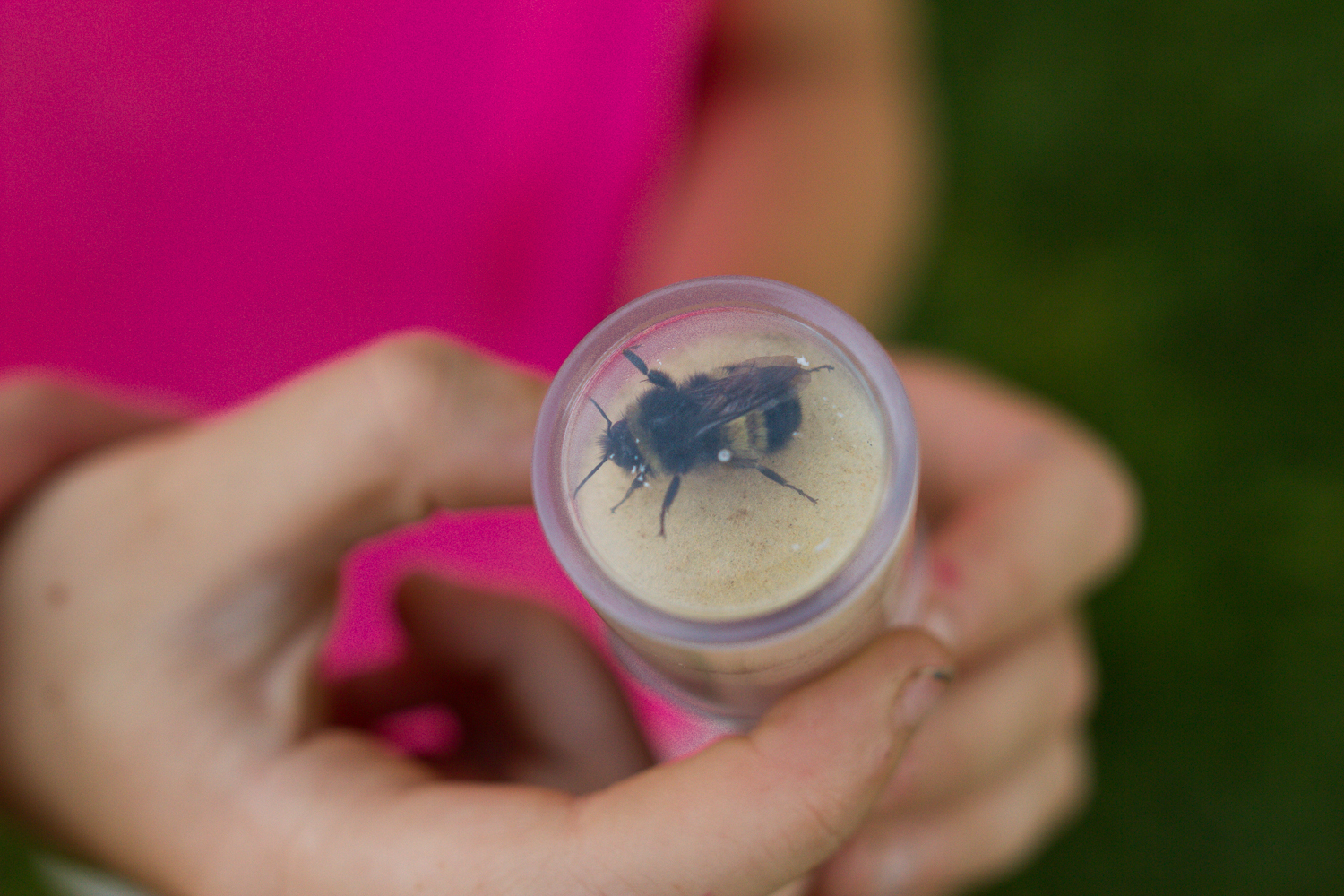What are Bumble Bees?
Bumble bees are important pollinators of wildflowers and crops known for their large hairy bodies. Their fuzziness also makes them excellent pollinators as they transport a lot of pollen while foraging. Bumble bees are social bees, capable of forming colonies of hundreds of individuals. There are 46 different species that call North America home. They occupy a wide range of habitats; prairies, meadows, mountainous ranges, savannas, agricultural landscapes, wetlands, and even urbanized areas. Bumble bee colonies rely on blooming flowers from early spring to fall to supply them with their only food, pollen and nectar. In addition to flowers, bumble bees need places to make nests (sheltered spots with insulating material, like abandoned rodent nests or dried grass clumps), as well as places for queens, the only ones to survive the winter, to hibernate (underground, often near wooded areas).
Bombus borealis queen on clover by Tiffani Harrison
Why are they important?
Roughly 26% of our North American bumble bee species are assessed to be at some level of conservation concern, and nearly 20% of the species are too data deficient to be assessed. Several species are vulnerable to extinction and there is the possibility that some species may already be extinct. It is likely that there isn’t a single factor to attribute to bumble bee decline, but rather a combination of factors and stressors. Although some species are at risk, populations of other species appear stable and, in some cases, increasing and expanding their ranges.
Bombus nevadensis by Tiffani Harrison
How can you help?
You can help bumble bees by 1 ) creating and maintaining habitat to support bumble bees and other pollinators, 2) helping to monitor bumble bee populations, 3) reducing risks from commercial bumble bee production, and 4) supporting research focused on bumble bee conservation.
Habitat
Bumble bees need a diversity of flowers blooming from early spring through late fall. They also need places to nest and spend the winter. Check out these resources for more information on creating habitat for bumble bees and other pollinators.
Ecoregional Planting GuidesClimate Change and Bumble Bees Brochure
Bumble Bee Nests
Monitor Bumble Bees
Many bumble bee species are in decline and it is vitally important to know where they are located so we can help their populations recover. Connect with monitoring efforts in your area and improve your ID skills with these guides.
Bumble Bee Watch
iNaturalist
Backyard Bumble Bee Count
Pacific Northwest Bumble Bee Atlas
Nebraska Bumble Bee Atlas
Missouri Bumble Bee Atlas
Minnesota Bumble Bee Atlas
Great Plains Bumble Bee Atlas
Wisconsin Bumble Bee Brigade
Queen Quest
Insects of Iowa
Photo by Elaine Evans

Bumble Bee Identification Resources
ID Guides Covering all of North America
Regional ID Guides
Bumble Bees of the Eastern United States
Bumble Bees of the Western United States
State/Provincial ID Guides
Guide to Minnesota Bumble Bees
Bumble Bees of Illinois and Missouri
Bumble Bees of Southwest Oregon
Bumble Bees of Iowa
ID Guides for Species of Conservation Concern
Pocket Guide to Identifying the Rusty Patched Bumble Bee
Rusty-patched Bumble Bee Identification
Rusty-patched bumble bee ID: queens
Pocket Guide to Identifying the Yellowbanded Bumble Bee
Pocket Guide to Identifying the Western Bumble Bee
Reduce risk from commercial bumble bee production
Commercially produced bumble bees may put wild bumble bees at risk by transmitting diseases or parasites. See white papers below.
Developing a Commercial Bumble Bee Clean Stock Certification Program: A white paper of the North American Pollinator Protection Campaign Bombus Task Force
Importation of Non-Native Bumble Bees into North America: Potential Consequences of Using Bombus terrestris and Other Non-Native Bumble Bees for Greenhouse Crop Pollination in Canada, Mexico, and the United States.
Research Priorities
Imperiled bumble bee conservation efforts can be improved with attention to key knowledge gaps and research questions. Imperiled bumble bee conservation efforts can be improved with attention to key knowledge gaps and research questions. These knowledge gaps are in five main areas: 1. Effects of stressors on population, colony and/or individual survival and health, 2. population level questions, 3. colony or individual level questions, 4. monitoring, and 5. emerging techniques.
Bombus terricola by Shannon Svensrud

To learn more about research priorities and potential sources of funding to support imperiled bumble bee research, visit the Imperiled Bombus Conservation Task Force website.